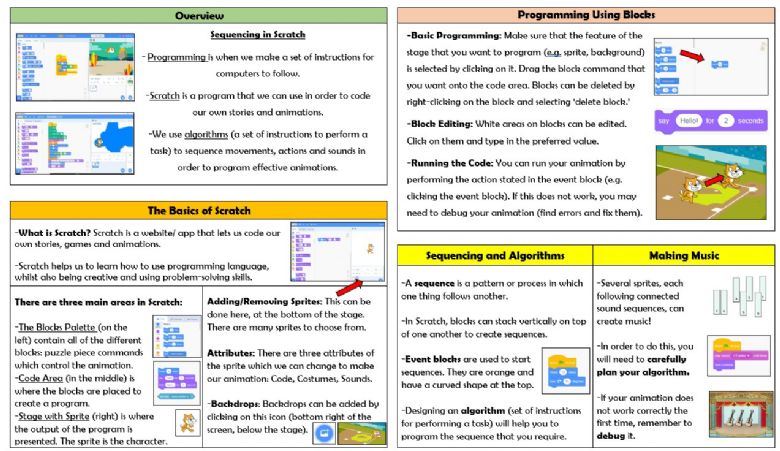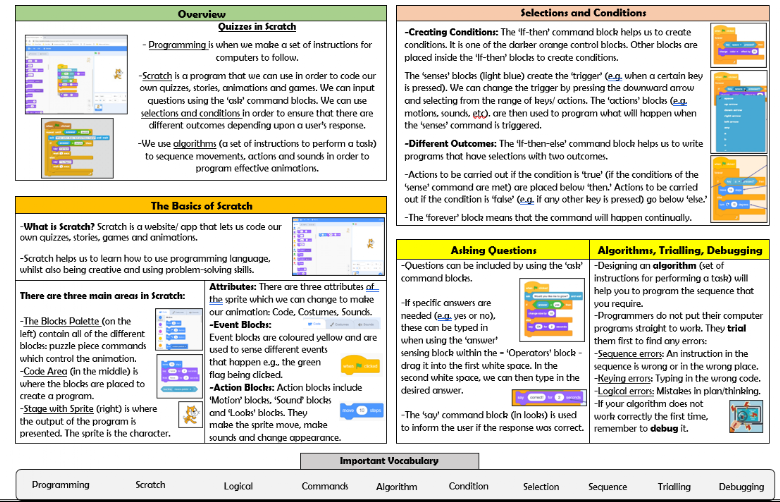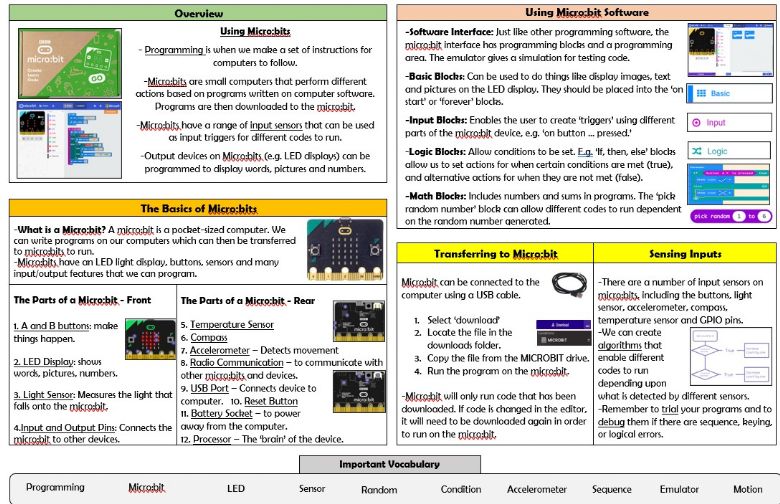Our learning for Spring Term (January - March) covers a range of inspiring elements of our computing provision. All pupils will have the opportunity to work in our specialist STEM facility, the 'Spark Lab', as well as learning important information around being digitally literate as well the importance of online safety.
Year 3
Sequencing Sounds
(Taught in our STEM facility - Spark Lab)
(Half Term 1 - Jan - Feb)

This unit explores the concept of sequencing in programming through Scratch, before progressing to sequence sounds and actions in 'Wonder Workshop' Dash and Dot, in our specialist STEM learning facility - 'The Spark Lab'. It begins with an introduction to the programming environment, which will be new to most learners. They will be introduced to a selection of motion, sound, and event blocks which they will use to create their own programs, featuring sequences. The final project is to make a representation of a piano. The unit is paced to focus on all aspects of sequences, and make sure that knowledge is built in a structured manner. Learners also apply stages of program design through this unit.
Year 3
Branching Databases
(Half Term 2 - Feb - Mar)

Learners will develop their understanding of what a branching database is and how to create one. They will use yes/no questions to gain an understanding of what attributes are and how to use them to sort groups of objects. Learners will create physical and on-screen branching databases. To conclude the unit, they will create an identification tool using a branching database, which they will test by using it. They will also consider real-world applications for branching databases.
Year 4
Repetition in Shapes
(Taught in our STEM facility - Spark Lab)
(Half Term 1 - Jan - Feb)

Learners will create programs by planning, modifying, and testing commands to create shapes and patterns. They will use Logo, a text-based programming language, as well as Sphero - in which they will programme a small robot using a text-based programming language in our specialist STEM learning facility - 'The Spark Lab'. This unit is the first of the two programming units in Year 4, and looks at repetition and loops within programming.
Year 4
Online Safety
(Half Term 2 - Feb - Mar)
Our online safety unit contains the following lessons, looking to enhance pupils' awareness of online issues they may encounter and how to be a good online citizen themselves.
- Being SMART with a heart
- Communicating Online
- Online Bullying
- Sharing Information online
- Online Gaming
- Reliability of online information
The unit concludes with a digital wellbeing review for the pupils to ensure they are looking after themselves online.
For more information on our online safety offer, please see the Safeguarding tab on our website.
Year 5
Repetition in Shapes
(Taught in our STEM facility - Spark Lab and our iMac Suite)
(Half Term 2 - Feb - Mar)

Learners will develop their knowledge of ‘selection’ by revisiting how ‘conditions’ can be used in programming, and then learning how the ‘if… then… else...’ structure can be used to select different outcomes depending on whether a condition is ‘true’ or ‘false’. They represent this understanding in algorithms, and then by constructing programs in both the Scratch and Swift Playgrounds programming environment. They learn how to write programs that ask questions and use selection to control the outcomes based on the answers given. They use this knowledge to design a quiz in response to a given task and implement it as a program. To conclude the unit, learners evaluate their program by identifying how it meets the requirements of the task, the ways they have improved it, and further ways it could be improved. This unit will take place in both the Spark Lab and our iMac suite.
Year 6
Sensing Movement
(Taught in our STEM facility - Spark Lab and our iMac Suite)
(Half Term 2 - Feb - Mar)

This unit is the final KS2 programming unit and brings together elements of all the four programming constructs: sequence from Year 3, repetition from Year 4, selection from Year 5, and variables. Pupils will be taught these skills in our specialist STEM facility 'The Spark Lab', before applying them with micro:bit devices and our other devices, such as Sphero as well as Ozobot.
Design features prominently in this unit. A design template is introduced, initially scaffolded to give pupils the opportunity to create code from a given design. Later, pupils create their own design, using the same template. In the final lesson, pupils will apply their knowledge of the programming constructs and use their design to create their own micro:bit-based step counter.
